DAVID GENE PEARSON - 12/22/1934 - 11/12/2018
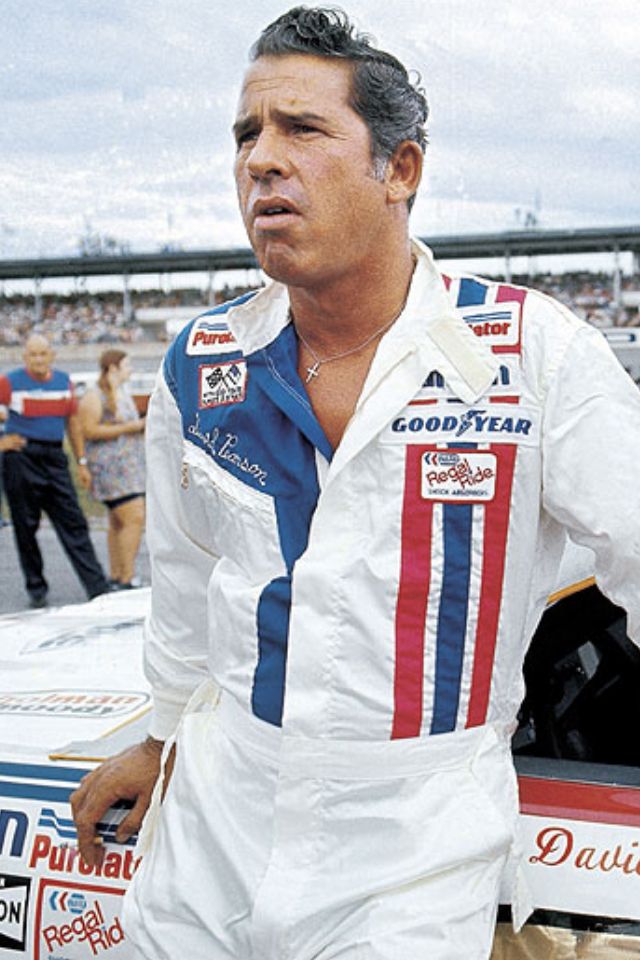
a former American stock car racer from Spartanburg, South Carolina. Pearson began his NASCAR career in 1960 and ended his first season by winning the 1960 NASCAR Rookie of the Year award. He won three championships (1966, 1968, and 1969) every year he ran the full schedule in NASCAR's Grand National Series (now Cup Series). NASCAR described his 1974 season as an indication of his "consistent greatness"; that season he finished third in the season points having competed in only 19 of 30 races. At his finalist nomination for NASCAR Hall of Fame's inaugural 2010 class, NASCAR described Pearson as "... the model of NASCAR efficiency during his career. With little exaggeration, when Pearson showed up at a race track, he won. Pearson ended his career in 1986, and currently holds the second position on NASCAR's all-time win list with 105 victories; as well as achieving 113 pole positions. Pearson was successful in different venues of racing; he won three times on road courses, 48 times on super speedways, 54 time on Short tracks, and had 23 dirt track wins. Pearson was nicknamed the "Fox" (and later the "Silver Fox") for his calculated approach to racing. Pearson's career paralleled Richard Petty's, the driver who won the most races in NASCAR history. They accounted for 63 first/second place finishes (with the edge going to Pearson). Petty said, "Pearson could beat you on a short track, he could beat you on a super speedway, he could beat you on a road course, he could beat you on a dirt track. It didn't hurt as bad to lose to Pearson as it did to some of the others, because I knew how good he was. Pearson was born in Whitney, South Carolina, near Spartanburg, in an area known for its
moonshine roots. When Pearson was young, he climbed a tree at the local stock car racing track (Spartanburg Fairgrounds) to see the races. Pearson said, "I'd always been interested in cars, and I decided right then that was what I wanted to do with my life." Pearson began racing in NASCAR's Grand National series during the 1960 season shortly after winning the 1959 track champion at Greenville-Pickens Speedway. His first NASCAR start was the first 1960 Daytona 500 qualifying race and he finished 17th in a self-owned car that he had purchased from Jack White. He started 22 events that season, finishing 23rd in season points and was voted the 1960 NASCAR Rookie of the Year. His season was highlighted by a second-place
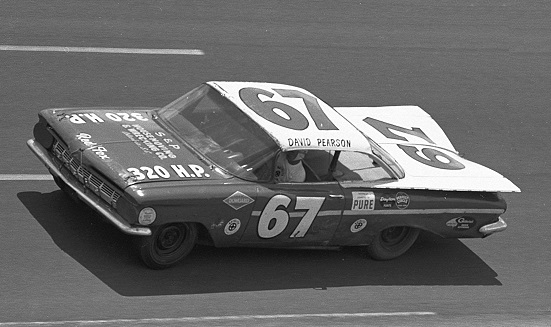
First Cup start - 1960 Daytona
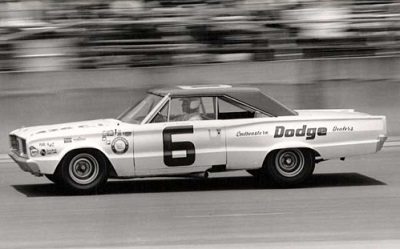
1966 Daytona 500 - Dodge Coronet
finish at Gamecock Speedway in Sumter, South Carolina, and a fourth place finish at Hickory Motor Speedway and fifth after starting on the pole position at his hometown track in Piedmont Interstate Fairgrounds in Spartanburg. When Pearson bent the frame of his own race car early in the 1961 season, he began working as a house roofer in Spartanburg to support his family, which included two sons. Darel Dieringer had a contract dispute with a tire company and was not able to compete in the inaugural World 600 at Charlotte. Littlejohn was at the track, and he recommended that car builder Ray Fox hire Pearson. Pearson was unsure if he should join the team, and Fox was not convinced that he should trust his car to the relatively untested 26-year-old driver. After Pearson had a
successful test run, he qualified the car with the third fastest time behind Richard Petty and Joe Weatherly. Pearson raced his way into the lead early in the event and was the leader after the first round of pit stops. Pearson and Petty were the only two cars on the lead lap by a restart on the 311th lap (of 400). Petty made up six seconds on Pearson in 20 laps before Petty had to retire with a blown engine. Pearson held a three lap lead over Fireball Roberts and was leading late in the race until he ran over some debris on the backstretch and blew a tire with only two laps remaining. Pearson drove the car around the track slowly for the final lap at approximately 20 miles per hour to take the victory. He started in 19 races during the 1961 season and he had three wins to finish thirteenth in season points, winning his first NASCAR
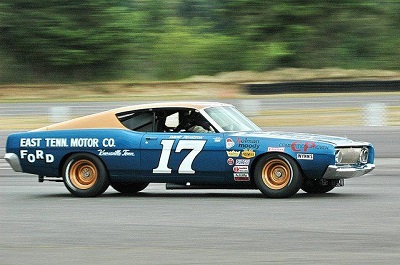
1968 Ford Torino
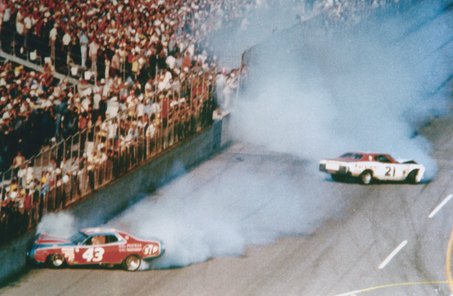
1976 Pearson - Petty crash last lap Daytona 500
race in a Fox-prepared car at Concord Speedway. Later in the season, he won the Firecracker 250 at Daytona and the Dixie 400 at Atlanta. 1963, he hooked up with car owner Cotton Owens; and in 1964 the duo claimed eight wins, and finished third in the championship, which was won by Petty for the first time. They would stay together through the 1967 season and Pearson would win 27 times. NASCAR banned the Mopar Hemi engine in 1965, so Petty and Pearson boycotted many races rather than compete with a non-competitive engine against Ford and Mercury drivers. Both competed in drag racing. Pearson drove a Dodge Dart station wagon nicknamed the "Cotton Picker" for Owens. In his first full time season, Pearson won his first of three NASCAR championships in 1966. He won 15 of 49 events, which was the second most in
NASCAR history at that time. In 1968 Pearson ad Owens split; and Pearson moved to the Holman-Moody race team driving the #17 Ford. This was Pearson's second season of running the full schedule, Petty and Pearson each won 16 races; Pearson won the championship and Petty finished third. Pearson won his third and final championship in his final season running the full schedule in 1969. The championship tied Pearson with Lee Petty for the most championships in NASCAR history (Richard Petty, Dale Earnhardt and Jimmie Johnson hold the current record with seven titles each). He started out the season at the 1969 Daytona 500 by being the first driver to qualify faster than 190 miles per hour with a speed of 190.029 mph. After winning the first Daytona 500 Qualifying race, Pearson led the 500 under caution with 13 laps remaining and changed only his right side tires in a two-tire pit stop.

1976 Daytona 500 win
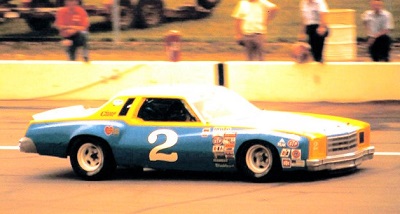
1979 Darlington Southern 500 win
Pete Hamilton did a four-tire stop and passed Pearson after the restart for the victory. The 1970 season started with Pearson competing part-time, like he would for the rest of his career. In 19 starts, he won a single race (Darlington) and earned two pole positions (Bristol, Darlington) to finished 23rd in points. R. J. Reynolds began sponsoring NASCAR in 1971 and the Grand National series was re-titled the Winston Cup Series. Holman Moody and Pearson split near the middle of the season after Pearson refused to take a 10% pay cut . He won 30 races driving for Holman-Moody. At RJ Reynolds' request, NASCAR began cutting down on the number of races in 1972 season by
eliminating midweek races. It also dropped 13 short tracks and had a 31-race schedule. Pearson began racing for the Wood Brothers that season. He won later that season at the Firecracker 400, a race that he would win three straight times. While Pearson only started in 18 (of 28) races during 1973, he was named the NASCAR driver of the Year after finishing eighth in points. He won 11 of those 18 races in the Wood Brothers Mercury. His 61% win percentage is the highest in NASCAR history. The 1976 Daytona 500 is known for the final lap battle between Pearson and Petty. Petty was leading Pearson going into the last lap by a couple of car lengths. Pearson used the draft to attempt a slingshot pass against Petty at the end of the back stretch on the last lap, but his car pushed high into the final turn while going around another car. Petty edged under Pearson, and their cars crashed into each
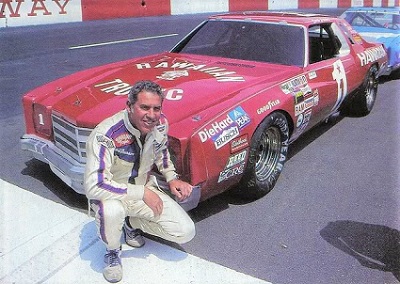
1980 Darlington win
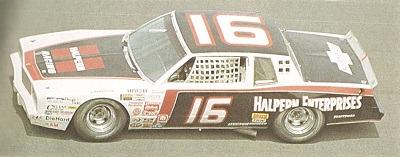
1981 Daytona 500
other on the front stretch in the final turns. See finish of race here. They both spun out into the infield grass approximately 100 feet short of the finish line. The third place car was over a lap behind the disabled cars. With Petty unable to restart his car, Pearson slowly drove his Wood Brothers Mercury over the grassy infield stretch on the last lap, but his car pushed high into the past the finish line for his only Daytona 500 victory. In 2007, ESPN rated the race as the fourth most interesting Daytona 500. He
won a series-best ten races in 1976, but finished ninth in season points after competing in only 22 of 30 events. Pearson also won the 1976 Southern 500 (video). In March 1978, Pearson won his 100th Winston Cup race at Rockingham. Pearson began 1979 by winning the pole position at year's first race at Riverside; and was the final season racing for the Wood Brothers, with his last race happening at Darlington. After a miscommunication, he left the pits without waiting for the pit crew to place lug nuts on the car and the tires fell off the car when he reached the end of pit lane. Pearson quit the team the race. Later during the season, Rod Osterlund's rookie driver, Dale Earnhardt, suffered a shoulder injury.
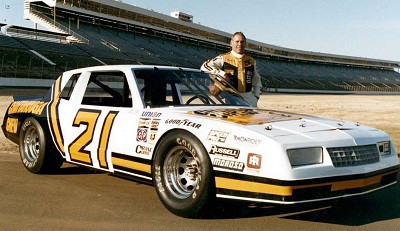
Last Cup Start - Michigan 1986
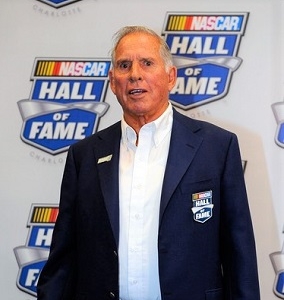
NASCAR Hall of Fame Induction 2011
Osterlund hired Pearson to replace Earnhardt driving the #2 for four races; he collected the pole position at Michigan and won the 1979 Southern 500. Pearson raced for Hoss Ellington in nine races driving the Hawaiian Tropic Chevy during the 1980 season. They raced only a big tracks like Daytona, Michigan and Atlanta where they had a shot to win. He won the 1980 CRC Chemicals Rebel 500 at Darlington for his final Cup win. For the rest of his career Pearson raced just a hand full of races each season. In 1981 he drove for Joel Halpern with Halpern Enterprises as the Sponsor. Pearson raced in twelve races during 1985, the first eight for Hoss Ellington and the final four for himself. 1986 was Pearson's final season in NASCAR. He ran some races for car owner Hoss Ellington and for some Pearson drove his own car. He drove the #21 Chattanooga Chew #21 in his final start which would come at Michigan. After a DNF at Charlotte, he finished tenth in his final race at the August Michigan event. The National Motor Sports Press Associations Hall of Fame inducted Pearson in 1991. He was inducted in the International Motorsports Hall of Fame in 1993 and the Charlotte Motor Speedway Court of Legends in 1998. He was one of ten finalists for the Driver of the Quarter Century (1967–1991) sponsored by a United States
businessman; Mario Andretti won the award. In the middle of 1999, Sports Illustrated used votes from 40 NASCAR insiders to name Pearson the Top Stock Car Driver of the Twentieth Century. In 2009, Pearson was one of the 25 nominees for the first class to be inducted in the NASCAR Hall of Fame. In 2010, Pearson was named to the 2011 class in the NASCAR Hall of Fame. He received the most votes, from 50 of 53 voters. "I am just proud that that many people thought enough to vote for me," Pearson said. For his career Pearson ran in 574 Cup events, and garnered 105 wins (second most in all time history) He also had 301 top 5 finishes, and he won 133 poles. won almost 3 million dollars for his career. He won the Cup championship three times; the only three years he raced the full season and competed for the title. A David Pearson Tribute video can be found here. His major wins include: Daytona 500 (1976) World 600 (1961, 1974 & 1976); Southern 500 (1976, 1977, & 1979). Pearson passed away on November 12, 2018 at the age of 83. Some info from Wikipedia.
All Photos copyright and are property of their respective owners
